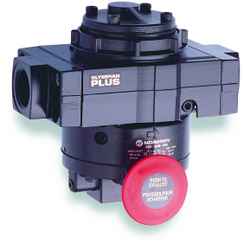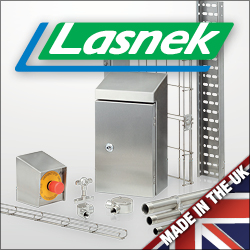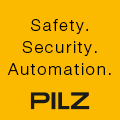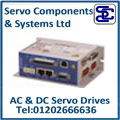
Posted to News on 6th Mar 2014, 14:17
Compressed air safety on machines, and regulatory compliance
Ben Rickards of Norgren explains what machine builders need to know about the safety of compressed air systems on machinery, in the context of the relevant regulations, legislation and standards.

Maintaining a safe working environment is an area subject to increasingly stringent legislation such as the Machinery Directive, the Pressure Systems legislation and the Provision and Use of Work Equipment Regulations (PUWER). All of these to some degree govern compressed air equipment and issues such as overpressure, sudden movement of parts, and treatment of exhaust air.
Overpressure protection (Legislation Reference: Machinery Directive 2006/42/EC)
To combat overpressure conditions, relief valves are widely used. These are control valves with their outlet connected to a pressure system to enable system pressure to be held at a constant level. When selecting a valve, manufacturers should consider specific system criteria. All components should have a safe working pressure (SWP) and a 10 per cent overpressure limit - the maximum overpressure allowed with the relief valve in operation.
Relief valves should have a flow capacity exceeding the compressor's free air delivery capacity in systems without a receiver. Alternatively, the device should have a capacity above the flow through the smallest flow passageway of the equipment being protected when exposed to the highest possible pressure.
The most common relief valve is the pop type, followed by the more accurate and repeatable diaphragm type. However, for optimum performance, pilot-operated valves should be used.
An in-line type is often popular, where all control equipment/protection devices are in one location, usually in an assembly. This device has a relief port at 90 degrees to the flow direction. Under normal operating conditions, flow passes straight through it to the downstream system unaffected; the valve only operates when the set relief pressure is exceeded. The in-line device differs from the pop or diaphragm types that are connected via a teepiece, with flow only occurring when venting air to atmosphere.
Soft start/dump valves (Legislation Reference: Machinery Directive 2006/42/EC)
Protection of moving parts is paramount, both in terms of reducing danger to personnel from sudden part movement and negating excessive wear due to high loadings on start-up.
This is where the use of 'soft start' ('slow start') valves is desirable. During normal operation, air passes to a pneumatic system or device in a gradual manner. The rate of pressure build-up can be adjusted through a restricted passageway in the valve - generally an internal poppet spring-operated device. The poppet operates when the gradual pressure build-up produces a force exceeding that holding it closed. The poppet then moves to the fully open position at a condition known as the snap point, typically within 40-70 per cent of full line pressure.
The slow start can be coupled with a dump or exhaust function valve within one body for compactness. The 'dump' valve quickly exhausts pressure from the downstream system. It can have solenoid or air pilot operators and often an override or emergency dump function.
Furthermore, a limit switch can be introduced to the device's valve spool. This can give a 'spool open' or 'spool closed' signal, providing a monitoring function which, in conjunction with other valves and relays - plus suitable system redundancy - can aid compliance with safety legislation.
Exhaust air
To reduce noise and oil mist, and minimise danger to personnel, exhaust air must be treated correctly. Where a dump valve is employed, large volumes of air can be released at high speed, creating high noise levels. Simple silencers can solve the problem but heavier-duty silencers may be required in more demanding applications.
Silencers are normally rated on their noise reduction and associated back pressure. The most cost-effective choice would be based on flow rate and required duty.
Oil is the next major pollutant, particularly in incorrectly lubricated systems or those requiring high lubrication levels. In such instances, a coalescing exhaust silencer should be considered. This device results in small airborne particles in the form of mists merging into larger droplets and falling into a container for removal as liquid oil. Since these devices are on the exhaust side of the pneumatic system, they are exposed to sudden shock loading, meaning their oil removal capabilities are less than those using coalescing filters. A good exhaust silencer, however, should remove oil to around typically 2ppm under average usage conditions.
In addition to these devices, there are numerous other airline products which can help increase safety in pneumatic systems. These include preset pressure regulators, lockable shut-off valves and tamper-resistant kits.
Follow the link for more information about compressed air equipment safety products and legislation.


















